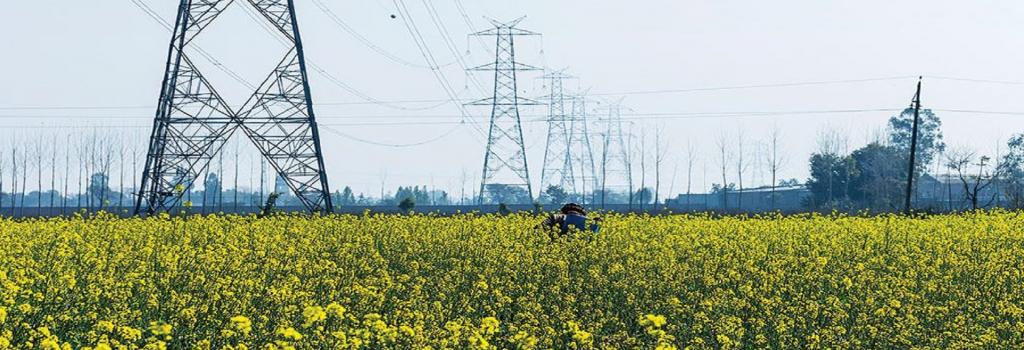The crippling Discom business needs elementary restructuring for a future in renewable energy.D
The reason behind this is that most discoms have run huge financial losses and have poor operational performance. The country’s discoms had collectively accumulated losses of 3800 Billion INR and marching towards bankruptcy,. Their inability to collect revenues from their customers due to Power Theft and lack of proper billing and collection makes it difficult for them to recover costs. They are further saddled with unsustainable tariff structures, slabs for different end users and associated cross-subsidies. This makes it unlikely that their business can break even.
Discoms are also bound to large thermal power plants by means of long-term PPAs, with two-part tariffs that have a fixed cost component. As a result, there is little incentive to offset thermal consumption with newer renewable power, even if the latter is cheap. In fact, a large renewable capacity with “must run” status might be adding pressure to the discoms. There have been multiple attempts to turn the situation around, with the latest being the Ujwal Discom Assurance Yojana (UDAY), introduced in 2015. It, however, remains a work-in-progress.
Scheme to cut down losses
It was clear that all the plans for the electricity sector — 100 per cent electrification, uninterrupted and high quality power supply, and 175 GW of renewable generation absorbed by the network by 2022 — would suffer setbacks if the discoms continued in this vein. In November 2015, therefore, UDAY was introduced to restructure the discoms’ debt to make them financially stable and hold them accountable for their performance. It was proposed that state governments would take over 75 per cent of their respective discoms’ debts, with bonds issued for the remaining 25 per cent. Aside from the financial restructuring, the discoms were expected to improve their performance.
The aggregate technical and commercial (AT&C) losses partly reflect efficiency at the transformer and distribution network level. To cut down on this, UDAY mandated the installation of smart meters in rural and urban areas, and metering of transformers to track theft and identify leakages and points of low efficiency. UDAY planned to cut down the losses to an average of 15 per cent by 2018-19.
Three years on, the results of UDAY remain unclear and questionable. Many tasks are running behind schedule—especially Smart meter installations. AT&C losses remain high, with some states indicating losses of over 40 per cent, a far cry from the 15 per cent target. The gap between average cost of supply (ACS) and the average revenue realised (ARR) continues to be high in most states.
As per the Union power ministry’s annual integrated ratings report, which assigns credit ratings to each company with respect to regulatory, operational and financial parameters, 42 discoms are under the scanner. The top rated discoms are concentrated in Gujarat. Uttarakhand is the only new entrant, while Punjab, formerly a highly rated discom, has deteriorated. At best, more discoms appear to be concentrated at the higher end of the average range as compared to the situation in 2014-15. The number of discoms in the worst performing bracket has quadrupled.
Closing the gap
As
per the UDAY dashboard in September 2018, overall AT&C losses indicate poor
outcomes. It was expected that by March 2019, all the states would be able to
close this gap and begin turning profitable. While there is still some way to
go before this gap is completely closed, the last four years have seen
improvement in terms of the average national performance.
On closer examination, only four states are recovering their costs incurred by
supplying power, of which three—Rajasthan, Karnataka and Gujarat—are
significant procurers of renewable energy. On an average, the states that are
recovering their cost have relatively low AT&C losses.
Smart meters are pushed as a viable solution to track electricity consumption, reducing losses by controlling Power theft and improving billing and collection. Rajasthan, the best performing state in terms of the ACS-ARR gap, has 58 per cent smart meter installation rate for large consumers (over 500 kWh). Most states have made practically no headway on smart metering.
Installation
of separate feeders for rural households and agricultural load aims to provide
appropriate power delivery to farmers and also reduce misuse of subsidized
electricity. Distribution loss is surrogate to Power Theft in most of the South Asian Countries.
According to the UDAY dashboard, 25 of the 27 states and Union territories have
made tariff revisions. But as per data of the consultancy firm KPMG India, the
implementation of tariff increases (the terms of which are agreed to in
individual state MoUs signed with the power ministry) is inconsistent. It is
also unclear if the marginal increases in tariff have had material impact on
the ACS-ARR gap, since costs have gone up.Reduction in the ACS-ARR gap can largely
be attributed to the financial restructuring between 2016-17 and 2017-18.
Delhi-based non-profit Centre for Science and Environment estimates that the
interest component of the tariff for the period is 8 per cent of the total
expense.
With the state government taking over the debt and reducing discoms’ interest
payment, ACS has reduced. At a national level it would appear that the gap
closure is attributable to financial restructuring. It undercuts the notion
that discoms have made any real improvement. This lack of progress on the
operational front is an indictment of UDAY and on rationalisation of tariffs.
[Courtesy:Priya Sreenivasan,’Down To Earth’]
















Add comment